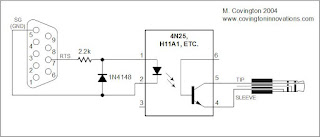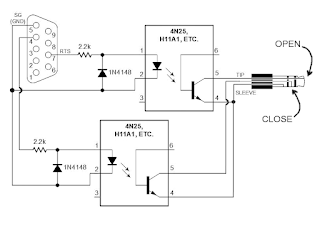Section I: Introduction
The introduction should do the following:
1. Open up the subject.
"Information encryption techniques have been an important and active research area from ancient time to nowadays, which involves a number of applications such as..."
2. Survey past work relevant to this paper.
"Recently, various methods based on information optics for high dimensional data encryption and decryption have been explored to expand the degrees of freedom for key design and, therefore, to increase the security level of the entire information encryption system [1–6]...."
3. Describe the problem addressed in this paper,
and show how this work relates to, or arguments, previous work.
"In this paper, we present an alternative data encryption technique based on virtual-optics imaging system..."
4. Describe the assumptions made in general terms,
and state what results have been obtained. This gives the reader an initial overview of what problem is addressed in the paper and what has been achieved.
"We analyse the sensitivities for some of parameters of such a virtual optics imaging system, with which one is able to design..."
5. Overview the contents of the paper.
``Section II contains our formulation of the problem. Section III contains the experimental data...''
Section II: Formulation of the Problem
This section should do three things:
1. Define the problem to be considered in detail.
Typically this section might begin with something like:
"Consider a virtual–optical imaging system (VOIS) with a single lens. It is schematically shown in Fig. 1..."
The discussion should proceed in this way until the problem is completely defined.
2. Define all terminology and notation used.
Usually the terminology and notation are defined along with the problem itself.
"We refer to as the discrete Fresnel diffraction (DFD) transformation and express it as following
equation.."
3. Develop the equations
on which your results will be based and/or describe any experimental systems.
"In addition, the transmission function of imaging lens should also be described with its discrete
mode in order to carry out numerical simulation: <math here> "
Section III: Results
This section presents the detailed results you have obtained.
If the paper is theoretical, you will probably show curves obtained from your equations.
If the paper is experimental, you will be presenting curves showing the measurement results.
In order to choose the proper curves to present, you must first be clear what point you are trying to convey to the reader. The curves can then be chosen to illustrate this point. Whether your paper is theoretical or experimental, you must provide a careful interpretation of what your results mean and why they behave as they do.
Section IV: Conclusion
This section should summarize what has been accomplished in the paper.
Many readers will read only the Introduction and Conclusion of your paper. The Conclusion should be written so they can be understood by someone who has not read the main work of the paper. This is the common format for an engineering paper. Of course, the names of the sections may differ slightly from those above, but the purpose of each section will usually be as described. Some papers include additional sections or differ from the above outline in one way or another. However, the outline just presented is a good starting point for writing a technical paper.
Section V: Acknowledgements
It is good idea to mention here grant programs and people who contributed in the paper. Usually no more than 3-4 sentences.
References:
This post is based on "Fourteen Steps to a Clearly Written Technical Paper" by R. T. Compton, Jr. Examples of text are used from the article: Xiang Peng, Zhiyong Cui, and Tieniu Tan, Information encryption with virtual-optics imaging system, Optics Communications, 2002, 212:235--245.


